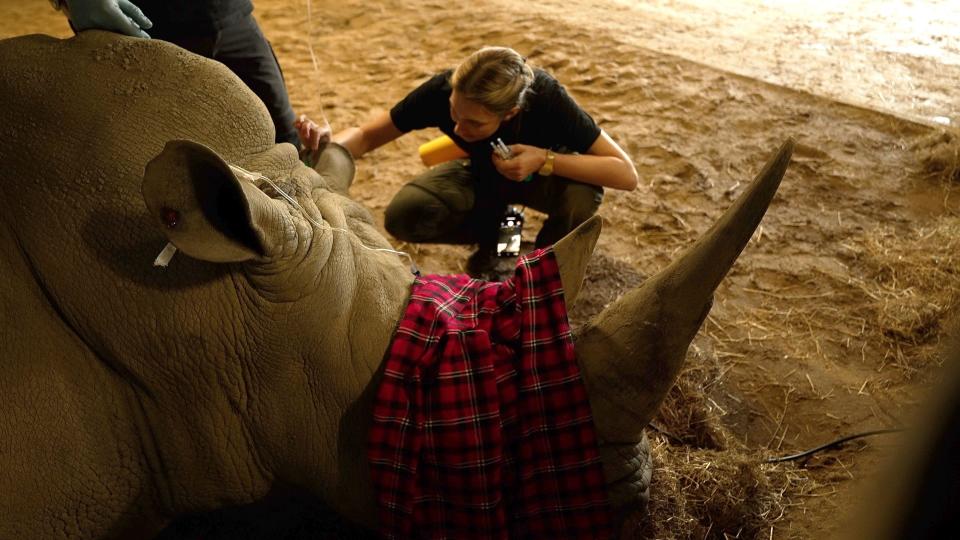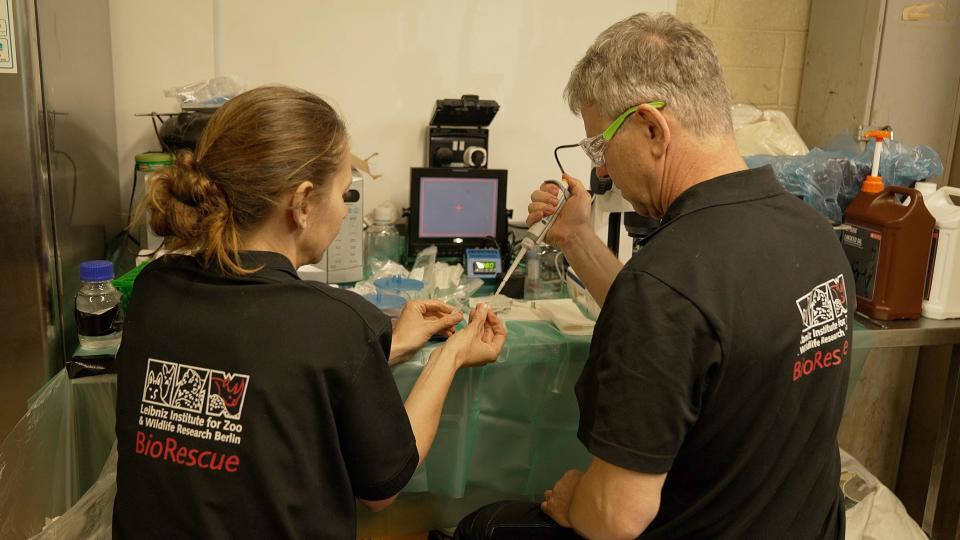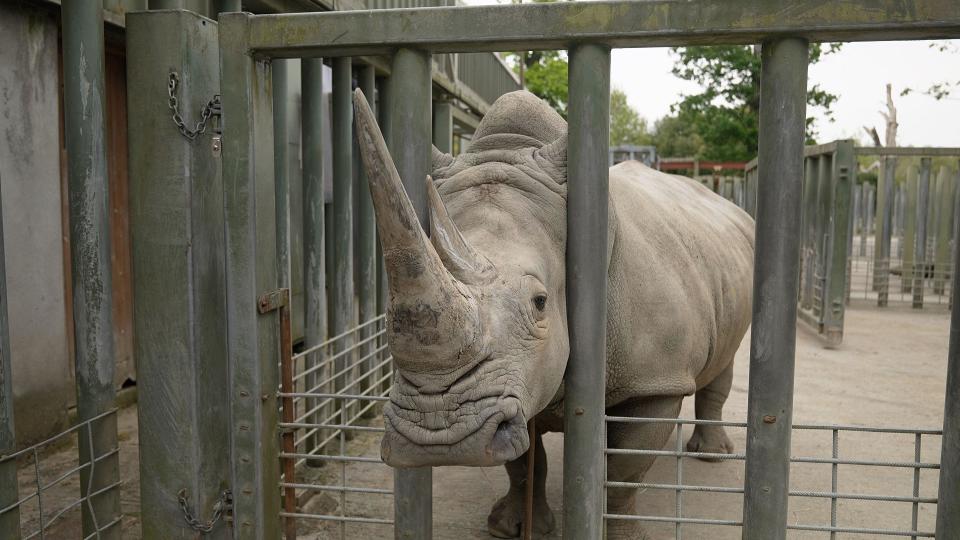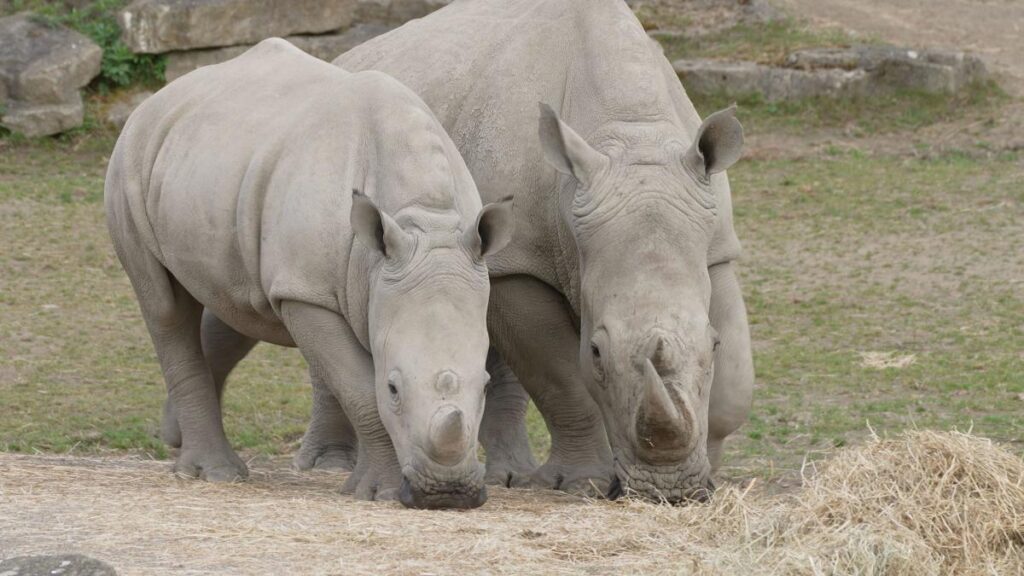Collecting eggs from a two-ton rhino is no easy task, but the procedure is being carried out in zoos across Europe to help the wild population.
The hope is that advanced fertility technology can increase the genetic diversity of Africa’s southern white rhinos.
The species was nearly extinct and there were only a few dozen rhinos left, so the animals are all descended from this small group.
Scientists believe that rhinos in zoos, which have greater genetic diversity through careful crossbreeding, could expand the gene pool using IVF.
It’s a technology that has recently seen a breakthrough: in January, researchers announced that they achieved world’s first rhino IVF pregnancy.


One of the animals taking part in the Southern White Zoo project is 22-year-old Zanta from Dublin Zoo in Ireland.
“Zanta has wonderful genes that are worth preserving, but we know from a previous reproductive assessment that she cannot reproduce,” said Frank O’Sullivan, a veterinarian at the zoo.
“The main reason we want to do the procedure is to bypass that, harvest her eggs and then fertilize them. The great thing is that Zanta will be represented in future generations of rhinos.”
A team of fertility specialists from the Leibniz Institute for Zoo and Wildlife Research in Germany flew to Ireland to carry out the procedure.
Zanta is tranquilized with a dart. Once she is fully tranquilized, the scientists get to work.
As the equipment monitoring Zanta’s vital signs beeps periodically, the researchers gather around a screen showing an ultrasound image of the rhino’s ovaries.
She has been given special hormone injections to help her produce eggs. The researchers are able to locate them in follicles, small sacs of fluid that appear as black circles on the screen.
Using an ultra-fine needle and great precision, they can extract the eggs.
The team took a long time to develop this technology.
The IVF pregnancy, announced in January, was among white people from the South. The team successfully transferred a lab-created rhino embryo to a surrogate mother.
No calf was ever born because the mother died early in the pregnancy from an unrelated bacterial infection, but scientists believe the pregnancy shows the technique is viable.
Their ultimate goal is to repeat this with the southern white rhino’s near-extinct cousin, the northern white rhino, for a project called Biorescue. There are only two of these animals left on the planet — both females.
However, scientists believe that the advances they have made in reproduction could also help solve the southern white rhino’s genetic problems.
Today there are thousands of white people in the South, but it wasn’t always that way.
By the end of the 19th century, the species was nearly wiped out by hunting and land clearing, with some estimates suggesting that as few as 20 individuals remained.
The animals have slowly recovered and are now classified as near threatenedbut because they started in this very small group, they suffer from a lack of genetic diversity.
According to Prof. Thomas Hildebrandt, director of reproduction at Leibniz IZW, these studies pose a risk.
“If you have a very small gene pool, a virus can, for example, jump from one individual to another because every individual is the same and the immune system behaves in the same way,” he explained.
In zoos, on the other hand, there is more diversity in southern white sharks because their breeding process is carefully planned.
“We are trying to apply this new technology to rescue Zanta’s genes and bring them back to Africa so that we have a larger gene pool in the future,” he says.


In a makeshift laboratory next to the rhino enclosure, scientists peer intently through a microscope to assess what they have collected.
Susanne Holtze, a member of the Leibniz team, says they managed to harvest four eggs.
Rhino IVF is still in its infancy: no calves have been born using the technique, but the team is building up a supply of embryos, made from eggs and sperm from across Europe. The hope is that these can one day be implanted into surrogate mothers.
“It takes a lot of effort and in the end we come home with a few cells. But these cells have the potential to become embryos and form a new rhino – a huge animal of two tons, so it is worth it,” said Dr. Holtze.


Back in the enclosure, shortly after the procedure is completed, Zanta wakes up.
She is a bit wobbly on her feet at first, but once everyone is sure she is okay, she goes outside. Her caregiver calls her name and she quickly comes over for a gentle stroke behind her ears.
Although she doesn’t know it, the few eggs she donated could make a huge difference and help ensure the survival of future generations of southern white rhinos.
Photos by Kevin Church







